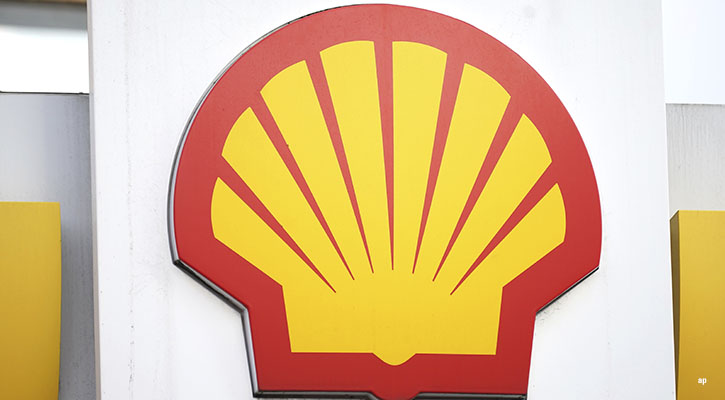Mixed Week for European Credit Markets
On Friday, European corporate credit spreads gave back the gains made earlier last week. By the end of the week, heightened tensions in the Middle East, rising oil prices, inflation and the European Central Bank's signal that it may begin to raise short-term rates in the near term offset the generally positive economic news earlier in the week. Sovereign credit spreads generally held their gains and tightened during the course of the week. The exception was Portuguese debt. For example, Portugal's 10-year bonds were unchanged as investors await a plan to deal with their financing needs. We expect the sovereign credit overhang will continue to limit the amount that European corporate bonds will tighten until a long term, sustainable financing plan for the peripheral sovereign issuers is implemented.
Portugal reportedly will require EUR 20 billion of financing this year to repay debt maturities and fund deficits, as the country has only EUR 4 billion of cash. We expect the crisis will force the ECB's hand sooner rather than later, since investors are pricing in a heightened potential for sovereign default. Portugal will have a difficult time gaining access to the public debt markets as the credit spread for its bonds continue to grind wider. For instance, Portugal's most recently issued bonds, the 6.40% notes 2016, are trading 70 basis points wider than where they were issued in February, leading to a 3-point loss to investors. Once burned, it is increasingly difficult to sell bonds to these investors who have already suffered a loss. Indicative of the heightened credit risk, Portugal's credit curve is inverted from three years on out.
Economic Data Supported US Credit Markets
The Morningstar Corporate Bond Index was unchanged last week as strong economic indicators offset rising tensions in the Middle East and inflation concerns. Trading activity last week focused on the new issue market, which staged a dramatic comeback after lacklustre issuance the prior week. The corporate bond market continued to be a beneficiary of the sell-off in the municipal bond market, as investors continued to reallocate funds from municipals into corporates; however, this trend appears to be coming to an end as the redemptions in municipal bond mutual funds slowed dramatically. We expect the tide to turn during the next few weeks as investors look to take advantage of attractive yields in municipal bonds.
The credit market reacted favourably to February's retail sales numbers. In general, discretionary retailers such as Limited Brands (LTD) (rating: BB+), Saks (SKS) (rating: B), and Macy's (M) (rating: BB+), which posted strong mid-single-digit to double-digit comparable-store sales, saw their bonds tighten roughly 10 basis points. Companies on the lower end of the consumer spectrum, such as TJX Companies (TJX) (rating: A) and Target (TGT) (rating: A+) posted low-single-digit comps and experienced only a couple of basis points of spread tightening. We expect many of these firms to give back these gains as March's numbers will probably appear soft on a year-over-year basis. Last March, many retailers experienced a disproportionate rebound in sales, driven by easy year-over-year comparisons, an earlier Easter holiday, and favourable weather conditions. On average, same-store sales increased 12.1% for Morningstar's retail coverage universe last March, one of the best months in several decades. Macy's will probably be the exception, as we expect the firm's bonds to continue to tighten as its credit metrics improve.
Leveraged buyout activity thus far this year has been slower than we had expected. However, the signs still point to a significant pickup in activity this year. In fact, we may have to update Morningstar's mergers and acquisitions outlook for 2011 to include larger targets. David Bonderman (co-founder of TPG Capital, one of the largest buyout firms) recently said financing for $10 billion-$15 billion LBOs is not only available, but back to attractive terms. The part that is most concerning to us is this quote: "It might not be the one you want to do, it might not be what you should do, but the capital is available," he said.
This is indicative of banks' willingness to structure deals with greater amounts of leverage and looser covenants. We think investors who stick to bonds with change-of-control protection or strong covenants will be well rewarded this year by avoiding those bonds that decline in value because of leveraged buyouts.
LVMH's Medium-Term Bonds Look Moderately Undervalued, As M&A Risk Sufficiently Priced In
Despite rumours to the contrary, we do not believe LVMH Moet Hennessy Louis Vuitton (MC) (rating A-) will pursue a transformational acquisition such as an outright purchase of Hermes or the spirits assets of Fortune Brands (FO). LVMH chairman Bernard Arnault has a long history of risk-taking, but the uncertainty of today's global financial markets (and the memory of the 2008 financial crisis, when LVMH parent Arnault Group reportedly sold art to raise cash) should be enough to keep acquisitions to a manageable size in the near future. Since its formation when Moet Hennessy merged with Louis Vuitton in 1987, the group has amassed a stable of more than 60 brands. However, most of LVMH's acquisitions took place when global financial markets were on more stable footing, in the late 1990s and mid-2000s.
Instead of pursuing large acquisitions, it is our opinion that the luxury goods maker will continue to pay down debt and invest in current operations over the near future. Our view is supported by Hermes' recent dividend increase to EUR 1.50 per share annually, which we believe the Arnault Group can use to bolster cash flow at the parent company level, which also owns a majority stake in Christian Dior. We calculate that LVMH will receive more than EUR 32 million for its 20.2% stake in Hermes during 2011--just more than 20% of total 2010 financial expense of EUR 151 million--giving the company an opportunity to lighten its debt burden this year.
Given LVMH's A- credit rating, which reflects the firm's strong free cash flows and moderate capital structure, we believe the bonds are slightly undervalued. The firm's medium-term notes trade in the 100- to 110-basis-point range, and we believe they could tighten about 20 basis points as the firm uses its free cash flow to pay down debt as it matures. Our only concern is the firm's potential for acquisition activity, but we assign a lower probability to the scenario that LVMH would substantially change its risk profile. We believe this risk is already priced into the notes, as they trade closer to a BBB+. That said, any confirmation of investors' fears could widen the bonds as much as 25 to 35 basis points.
New Bond Issues: ArcelorMittal
Steel giant ArcelorMittal (MT) priced a total of $3 billion in 5-, 10-, and 30-year notes. The move doesn't represent a material change to the firm's capital structure, as the bulk of the proceeds will be used to refinance existing debt ($6.7 billion comes due this year, so there's plenty of impending maturities to tackle). ArcelorMittal ended 2010 with $26 billion in debt, with coverage and leverage at cyclically weak 5.4 times and 3.0 times, respectively (excluding the stainless steel business). While we expect the firm's total debt load to be more or less unchanged this year, coverage and leverage should improve modestly on the back of stronger business fundamentals. Our view of ArcelorMittal's credit quality is unchanged on the news (we assign the firm a BBB- issuer rating, in line with Moody's and a notch lower than S&P's). As far as trading levels on the new bonds are concerned, spreads are slightly wider than what we think is appropriate, but we don't see particularly compelling value on an absolute basis (versus our BBB- benchmark) or in relative terms (versus peers).
The new five-year bonds ($500 million in principal) were issued at T+170, the 10-years ($1.5 billion) at T+215, and the 30-years at T+230. Based on trading activity in the weeks leading up to the deal's announcement, the bonds priced roughly in line with spreads on existing issues (the firm's 5-, 10-, and 30-year notes issued in August 2010 provide a handy comparison). Notably, there's little spread pickup to be had in going from the 10-years to the 30-years with ArcelorMittal's bonds--a meager 15 basis points. That said, we generally don't demand as much additional spread along the curve from issuers we believe possess sustainable competitive advantages--we assign ArcelorMittal a narrow economic moat--compared with those lacking such qualities. For instance, we wouldn't be as comfortable with the roughly 17 basis points in spread pickup offered by no-moat peer US Steel (X) (rating: BB+) going from the 2020s to the 2037s.
ArcelorMittal's new bonds trade a bit wide of what our BBB- rating would imply. The average nonfinancial, nonutility BBB- rated issue in the Morningstar Corporate Bond Index trades around T+190 (average term of about 10 years), implying roughly 20 basis points of excess spread on the company's notes and making for decent, albeit not stellar, absolute value. As far as relative value is concerned, we continue to view Steel Dynamics' (STLD) (rating: BB) 7.75% notes 2016 as the best pick among steel industry bonds. At T+475 (to April 2012 call at 103.875), the notes trade well wide of the typical BB industrial bond and, in our view, inadequately reflect the credit-bolstering qualities of the firm's low-operating-leverage business model.























